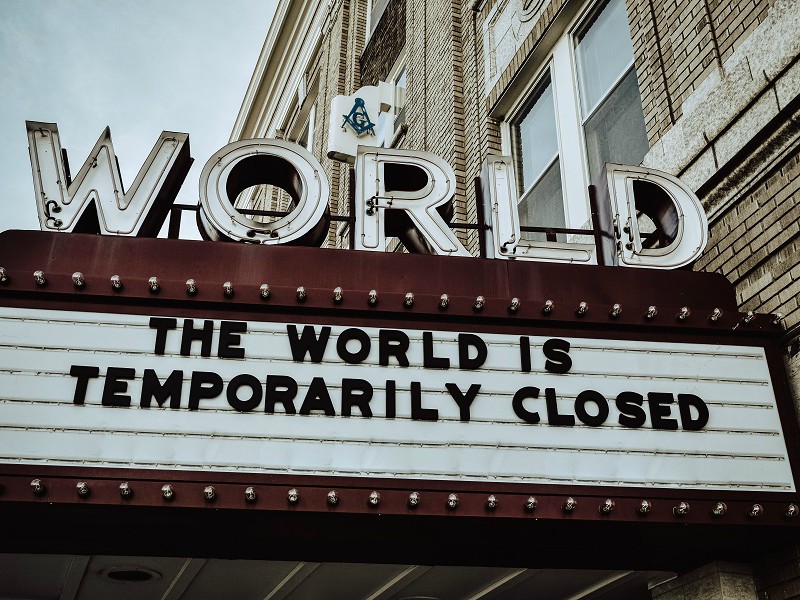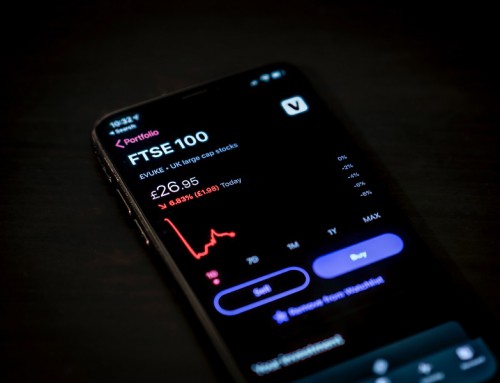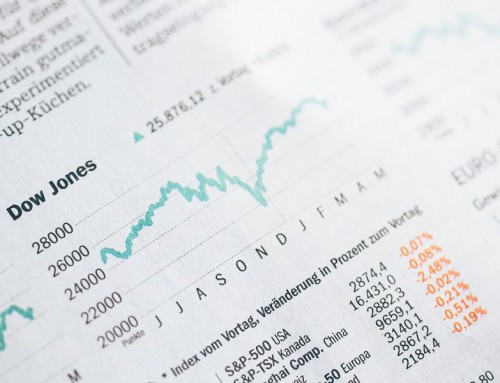COVID-19 has brought about great suffering and even death to almost all countries across the globe. While this is essentially a health issue, the economic devastation which COVID-19 has caused across the global economies is unprecedented. Governments across the world have scrambled to put in place massive fiscal stimulus and accommodative monetary policies to try to stimulate their various economies. To understand the scale of the economic destruction that COVID-19 has brought about to the global economy, we must first put into context the nature of the correction, stimulus and unemployment numbers. We first do so by taking a look at the U.S. economy and what is happening before taking a look at how Singapore will be impacted and is reacting to the crisis.
Stock market falls
All of the major indices in the U.S., the Dow Jones Industrial Average, The S&P 500 and the NASDAQ, experienced their swiftest correction in history in late February, taking only 10 days to decline 10 per cent. To top that off, in March 2020, the S&P 500 took just a mere 22 days to fall 30 per cent from its record high on February 19. The pace of the declines in major indices was even swifter than that of the Great Depression which started sometime in 1929 and lasted till about 1939. To many, the Great Depression was the largest, deepest and most widespread economic depression of the 20th century. Just to be clear, the Great Depression did not happen because of the stock market correction which began around the 4th of September 1929. In fact, the stock market correction was one of the consequences of the Great Depression. The stock market fell by about 90 per cent during the Great Depression over the course of four years. In contrast, during the Great Recession in 2008-2009, the Dow Jones Industrial Average fell from 14,164 on October 9th, 2007 to a low of 6,594.44 on March 5th, 2009.
I would attribute one of the key reasons for the Great Depression to a bill that was passed through the U.S. Congress. This bill caused a sudden fall in stock prices on the 28th of May, 1929, which was then followed by a market rally in June, just a month later. Four months later, in October, stocks nosedived. We are seeing a minor rally in the stock markets across the world currently and it is possible that markets will have to reprice valuations a couple of months down the road once companies start reporting their earnings and the markets, in general, come to terms with the damage that the pandemic has caused.
Drop in consumer confidence
The Great Depression was caused by a sharp fall in consumer confidence which consequently led to a drop in consumption and investment spending. This set of a deflationary spiral as people spent less, businesses were adversely affected and thus cut back on hiring and lowered wages. This, in turn, meant consumers had less to spend and further affected businesses. Moreover, the average retail investors realised that they would be better cutting their losses by selling their stocks or they simply needed the cash to tide them over this difficult period. Let us now look at how important consumer spending is to the recovery, post-2009 recession wise. Typically, the U.S. consumer would make up about 2 thirds of overall spending in the economy but since money was easy to come by with historically low-interest rates, U.S. consumer spending made up for about 90 per cent. Thus, the recovery, the longest bull market on record, was driven by consumer spending. This then puts into perspective how precarious our current situation is. The situation which we are in is not an economic problem that can be solved using fiscal or monetary policies. So long as we do not get COVID-19 under control and perhaps come up with a vaccine to eradicate it, the consumer will not go out to spend in the same fervour as before COVID-19 enter the picture. Governments around the world are implementing strict social distancing measures to try to slow the spread of the virus and this will reduce capacity at food and beverage outlets, shopping malls, places of attractions and even various means of transportation. This will drastically reduce revenues and businesses will have to implement cost-cutting measures to try to keep their balance sheets afloat. This is reminiscence of what happened during the Great Depression of 1929. So long as lockdowns are extended, we can expect businesses to suffer losses and in many cases, jobs will be cut.
Job losses
Even during the Great Recession, U.S. jobless claims peaked at 665,000 in March 2009. The all-time peak was in October 1982 at 695,000. Due to COVID-19, U.S. weekly jobless claims jumped by 6.6 million on the 9th of April 2020. More than 16 million Americans have lost their jobs in three weeks and that represents more than 10 per cent of the 151 million people on payrolls in the March monthly employment report. It just shows how weak U.S. companies are in terms of their balance sheets as many do not have the capability to tide through once the business is affected by a crisis. In some sense, it also shows the devastation that the world economy is going through. Many businesses are shut as countries try to contain the outbreak and since businesses are not generating revenue, one of the most straightforward cost to cut would be employee salaries. We then must put into perspective why businesses were so fast to reduce their headcount. A business must be thinking that this pandemic will not be resolved in the near term and thus it would be better to reduce their cost immediately. If they thought that the virus could be contained in a month or two, it would be better to maintain these employees for the month or two than to go through the hassle of rehiring and retraining new employees. The fact of the matter is that the loss of confidence is coming from the top-down and this reverberates throughout the global economy. More workers have been laid off in the U.S. in the second half of March 2020 as compared to the first two months of the 2008 Great Recession. On top of this, the historically horrible U.S. job figures are set to get worse as the U.S. extends their lockdown.
International trade
The sharp decline in international trade in the 1930s helped worsen the Great Depression, especially for countries that were trade dependent. In 1930, The Smoot-Hawley Act levied tariffs by about 40 per cent on a large number of imports. Pre-COVID-19, the U.S. and China were in locked horns in a trade war. The U.S. is currently led by a president who has based his campaign on trade protectionism in an attempt to bring jobs back to the U.S. economy. As history would tell us, a weakening of trade relations with the rest of the world will only serve to deepen an already seemingly severe recession. Donald Trump is not an advocate of free trade and if he enters a second term in office, he will continue his mantra of imposing tariffs in a bid to bring jobs back to the U.S. economy. Dialogue and consensus is essential in our increasingly connected global economy and even with the major oil producers, there seems to be a lack of consensus when it comes to regulating oil output. This, in turn, sent oil prices spiralling downwards.
To exacerbate the situation, travel, especially air travel, of people between countries has come to a virtual standstill. Due to the infectious nature of the virus, most countries have closed off their borders to tourists and business travellers. This is much worse as compared to the 1930s as this is not just a reduction of international trade and movement of people due to protectionist measures but also because of the necessity to restrict a virus which no one knows when will come under control.
Today, international trade is falling because of both a wave of protectionism as well as a pandemic which limits trade and ease of movement in between countries. The Smoot-Hawley Act caused international trade to drop by 65 per cent between 1929 and 1934. Currently, exports comprise a larger portion of the U.S.’s gross domestic product (GDP) of about 13 per cent compared to 5 per cent during the great depression. We do not yet know the exact extent that international trade has been affected but the World Trade Organisation (WTO) estimates that trade volumes will fall by between 13 and 32 per cent this year. The optimistic estimate is still worse than the Great Recession of 2009 where trade volumes fell by about 12 per cent. In February alone, USD$50 billion of global exports were wiped out due to a reduction in global trade due to COVID-19.
The COVID-19 pandemic also exposed a major weakness in the global supply chain. Many companies realised that they have been too reliant on one country, China, for the bulk of their inventory. China is the leading manufacturer of medical equipment and the second largest manufacturer for drugs and medicinal ingredients in the world. When the pandemic hit, there were many drugs that were in shortage according to the U.S. Food and Drug Administration (FDA). It was not just the medical sector but for many other sectors like tech and fashion where delays in China caused months of supply bottlenecks. Countries like Japan have started to incentivise their companies to shift production out of China and back to their home countries instead. This is contrary to international trade and job specialisation and the incentives are a cost on the economy and need to be funded. These subsidies create an artificial lowering of manufacturing cost in Japan and once the subsidies run out, it would still be cheaper to place production in countries where the cost of manufacturing is lower due to lower wages, rents and materials.
Long-lasting damage to industries and companies
There will be a lot of major restructuring and possible foreclosure of many companies in major industries like aviation, tourism and oil. The jobs that are lost will not come back onto the market for a foreseeable future. If an airline folds, there will be many unemployed and rival airlines will not be in a position to hire displaced workers. Structural unemployment is when people are unemployed and their skills do not match jobs that are in the market. Those in the aviation industry will have to seek employment in other industries and they will have to be retrained and reskilled. The situation facing airlines is extremely dire and by May 2020, most airlines could go bankrupt unless governments around the world intervene. The global airline industry has never seen such a hit to their business. Not even after the September 11 terrorist attacks. This is the similar situation companies in sectors like food and beverage, cruise ships and tourism-related industries face. Unless a medical solution is found, life, as we know it, will not go back to normal as safe distancing measures will need to be enforced to slow the spread of COVID-19.
Bailouts
A stark difference between the Great Depression and the current situation is with regards to bailouts. Many monetarists, including former Federal Reserve (Fed) Governor Ben Bernanke, argued that the Great Depression would not have happened if the Fed had taken more aggressive action. The president at the time, Herbert Hoover, was a champion for protectionist policies when it came to international trade and this perhaps pushed the country and the world into the Great Depression. The next president, Franklin Roosevelt, did implement policies that helped accelerate the country’s recovery from the Great Depression in the latter half of the 1930s but he was always interested in maintaining a healthy Fed balance sheet which did limit the effectiveness of his policies. Compare this to recent history where the Fed has played a significant role in stabilizing the U.S. and global economy from major recessions. In 2008, the size of the bailouts totalled US$700 billion and it helped get the U.S. out of the Great Recession and into the longest bull market in history which ended recently with the COVID-19 pandemic. The massive size of the bailout in 2008 was dwarfed recently when President Trump signed into law a US$2 trillion financial stimulus package to help mitigate the effects of COVID-19 on the U.S. economy. Although the severity of the current situation may be more dire as compared to the Great Depression, the fact that governments of the world can learn from the lessons a century ago will shorten the time that we get out of the current predicament. This is not to say that job losses will be mitigated greatly as no amount of stimulus will be able to get consumers to go out and spend in the same manner as before the pandemic. People are hit on two fronts. Their financial well-being as well as personal health are under attack in today’s predicament.
Will Singapore be spared a deep recession?
Categorically, no. I do not think that Singapore is immune to a global recession and in fact, I think that Singapore will be even more adversely affected by the economic fallout of the COVID-19 pandemic. Singapore is dependent on international trade and as a global hub for travel and commerce. As international trade shrinks and air and sea travel coming to a perpetual standstill, the ramifications will be very dire. In 2009, Singapore was facing the worst post-war recession. The size of the stimulus package in 2009 was valued at SGD$20.5 billion (US$13.7 billion). To put into context the severity of the current situation, Singapore announced three stimulus packages to try to mitigate the economic downturn from COVID-19. The total value of the three stimulus packages totalled SGD$59.9 billion (US$41.7 billion). This is almost three times the size of the 2009 stimulus package in nominal terms. The main reason for the magnitude of the package is because we are expecting the sharpest economic contraction in Singapore’s history and the government is hoping to mitigate the negative effects of the contraction.
Despite the Singapore government placing monies into the hands of the population with direct cash grants, businesses will still bleed significant losses as shopping malls and entertainment outlets remain shuttered to try to curb the spread of COVID-19. In the first quarter of 2020, Singapore’s economy shrank by 2.2 per cent. We will expect a more severe contraction in the second quarter as Singapore implements circuit breakers or in essence a semi-lockdown on the country. The Ministry of Trade and Industry downgraded Singapore’s GDP growth forecast for 2020 to between -4 per cent and -1 per cent. This figure will most probably be revised further downwards if the current predicament continues throughout 2020.
The government has, for the second time in Singapore’s history, dipped into our national reserves. This is in a bit to aid companies to keep their workers employed. Singapore has always prided itself on its relatively low unemployment rate but then there are a proportion of employed workers who are being asked to take no pay leave or accept wage cuts. This reduction in income will take a toll on consumer spending in general and we should start to see a softening of asset prices.
Gross domestic product (GDP) is the sum of consumption, investment, government spending and net exports. With consumption, investment and net exports falling sharply, do not expect Singapore’s 2020 GDP numbers to look good.
The only conclusive resolution to the current crisis is to have a medical solution. The current fiscal and monetary stimulus which can be seen across the world will not be able to get the global economy back to where it was pre-COVID-19. As the probable medical solution does seem at least a year or more away, people around the world should brace themselves for a very deep recession.
Yours Sincerely,






